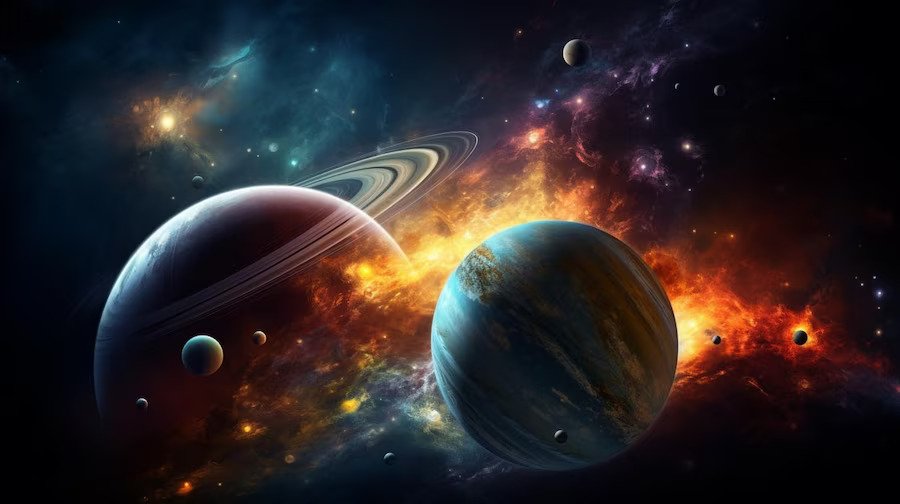The universe is one of the most incredible mysteries, with scientists unsure of how old outer space is. Estimates date the universe as 26.7 billion years old, and with more research, the facts about astronomy continue growing. Famous astronomers from the Babylonians have been mystified and entranced by the stars and planetary bodies.
Learning astronomy facts is an excellent way to learn about the space, energy, and matter that surrounds Earth. It’s beneficial to learn about the creation of stars, planets, and galaxies to understand the origins of the world. The best facts from outer space will blow your mind and provide a new perspective.
Here Are 8 Surprising Facts About Astronomy
Fortunately, your journey for knowledge and astronomy facts has led you to this comprehensive guide. Continue reading to take your first steps toward becoming an astronomer and learning about the universe today!

1. The Sun Is Massive
It’s easy to look at the Sun and feel that it’s not much larger than the Moon. The distance from the Sun hides how large it is compared to the Earth and Moon. To put things in perspective, you could fit one million Earths inside the Sun.
The Sun’s size and energy are vital to provide a habitable environment for life to thrive on Earth. In addition to its staggering size, the Sun’s core is the most significant energy source in the Milky Way Galaxy. The core produces energy equivalent to 100 billion nuclear bombs.
2. There’s Alcohol in Outer Space
Another fun astronomy fact to share with your friends is the abundance of alcohol in outer space. You’ll find a gas cloud above the Earth’s atmosphere that contains alcohol and stretches 1,000 times the diameter of the Milky Way. There’s enough alcohol in this cloud to supply 300,000 pints of beer to each human on Earth for one billion years.
It’s one of the most incredible features of outer space near Earth. The alcohol cloud is the place to be if you want to experience an otherworldly bachelor or bachelorette party before a wedding. The drinks are in the house!
3. Abundance of Space Trash
Outer space carries the vibe of dark, desolate, and lonely. While many people (rightly) focus on the abundance of trash piling up in rivers, forests, oceans, and beaches, there’s considerable space trash floating in and around the Earth’s atmosphere.
It doesn’t take much for these pieces of trash to wreak havoc on satellites orbiting the planet. A piece of junk as small as a paperclip is enough to take out a satellite. You could find yourself without TV service, and the government could find itself down a significant satellite for national defense.
Estimates from NASA state that there are over 170 million pieces of debris in Earth’s orbit. There’s no practical way to clean up and remove the trash and waste, though scientists are researching the best options to resolve the matter.
4. Uranus Is Unique
Uranus is the most unique and interesting planet in the Milky Way for various reasons. It’s the only planet that rotates on its side, and the causes of this rotation are unknown to scientists and astronomers. Some believe the planet’s rotation was altered by a massive collision with another sizable body from outer space.
It’s the black sheep of the planets in Earth’s solar system. Uranus is another reason you should expect the unexpected when learning facts about astronomy.
5. Stargazing Is a Time Machine
While stargazing can’t take you back in time, you’re staring into things that happened millions of years ago. The light covers incredible distances when traveling from stars and planetary bodies to the Earth. Despite light’s astonishing speed, light from these stars takes millions of years to reach you on Earth’s surface.
It’s possible that the stars you’re seeing no longer exist. The Earth Nebula is a perfect example of this phenomenon when stargazing at night. This region of outer space is 7,000 light-years away.
They appear as pillars of dust and fog to telescopes and satellites. In reality, they were destroyed by a supernova over 6,000 years ago. When looking at images of the Pillars of Creation, humans see what they looked like before their destruction.
The good news is that dead stars are rare in outer space. Most stars you see in the night sky are alive and well.
6. Earth Is Slowing
Humans view Earth through 24-hour days, but days are growing longer for the creatures that call Earth home. During the days of the dinosaur, days on Earth were 23 hours long. Earth’s rotation gradually slows each century, though the rotation rate is altered by only two milliseconds.
The best perspective from Earth slowing down is that you’ll enjoy an extra two seconds of daylight during the winter months. Indulge in those precious seconds while you can!
7. Sun and Moon Sizes
The Sun and Moon look nearly identical from Earth’s surface, but the Sun is immensely larger. The distance between the Earth and the Sun causes the illusion. The Sun is 400 times further from the Earth’s surface than the Moon.
The Sun is also 400 times larger than the Moon. The math creates the perfect optical illusion for Earth’s residents to enjoy.
Related: What Is Virgo Season & What To Anticipate From It?
8. Goodbye, Polaris
Polaris is famous as the North Star, but it will only enjoy the privilege of that title for a while. The Earth moves on a 26,000-year cycle, and within the next 12,000 years, Polaris will shift and allow Vega to take the spotlight.
The North shifts to different stars as the cycle unveils itself. Vega was the North Star several thousands of years ago, and it’s preparing to resume the crucial role of guidance and navigation (relatively) soon. Explore outer space with White Star Outdoors for a memorable night.
Explore These Facts About Astronomy Today
Astronomy is fascinating, and the more you learn, the more you’ll be tempted into becoming an astronomer. The facts about astronomy stretch as far as the universe, with massive alcohol clouds and stars shining in the night sky that no longer exist. To impress your friends, you can share fun facts about the Earth’s slowing rotation and the shifting new star.
The universe is stunning to admire with your eyes or a telescope, and it’s an essential part of the environment. Explore more of our Environmental and Technology blog posts for intriguing insights and facts today!
Read Also:




























